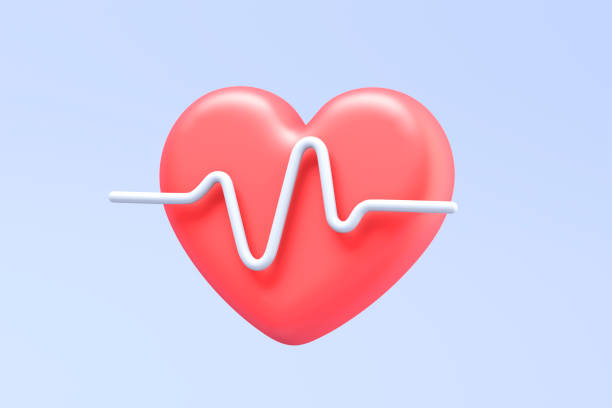The auscultation of pericardial rubs is an essential skill for diagnosing heart conditions, especially pericarditis. A pericardial rub is a distinct sound that occurs when the inflamed layers of the pericardium, the protective sac around the heart, rub against each other. This guide explores everything you need to know about pericardial rubs, from causes and sounds to symptoms, location, and treatment.
What Is a Pericardial Rub?
A pericardial rub is a scratchy, high-pitched sound that occurs due to friction between the layers of the pericardium. It is a hallmark sign of pericarditis, a condition characterized by inflammation of the pericardium.
Unlike the smooth “lub-dub” of normal heartbeats, a pericardial rub typically sounds irregular and may occur during all three phases of the cardiac cycle: systole, diastole, and atrial contraction.
Key Features
- Sound type: Scratchy, grating, or squeaky.
- Location: Most often heard at the left lower sternal border.
- Variation: The sound may change with posture, becoming clearer when you sit up and lean forward.
What Causes a Pericardial Rub?
Pericardial rubs occur when the pericardial layers become inflamed or irritated. The friction between these layers generates a distinct sound. Here are some common pericardial rub causes:
| Cause | Details |
| Pericarditis | The most frequent cause; can be viral, bacterial, or autoimmune. |
| Trauma or surgery | Direct injury or post-surgical inflammation can irritate the pericardium. |
| Kidney failure (uremia) | Toxin buildup can inflame the pericardium, leading to uremic pericarditis. |
| Cancer (malignancy) | Metastatic cancer can invade the pericardium and cause friction. |
| Connective tissue disorders | Conditions like lupus or rheumatoid arthritis can involve the pericardium. |
Pericardial Rub Sound vs. Normal Heart Sounds
The pericardial rub sound vs. normal heart sound comparison helps highlight its uniqueness:

| Feature | Normal Heart Sounds | Pericardial Rub Sound |
| Sound type | Smooth “lub-dub” | Scratchy or squeaky noise. |
| Occurrence | During systole and diastole | Throughout the cardiac cycle. |
| Variation with posture | None | Clearer when sitting up and leaning forward. |
For more clarity, you can find pericardial friction rub sound mp3 files online to hear the differences directly.
Is Pericardial Friction Rub Dangerous?
A pericardial friction rub itself is not inherently dangerous, but it can signal underlying conditions that may pose serious risks if untreated. The rub occurs due to inflammation in the pericardium, often associated with conditions like pericarditis. Whether it becomes dangerous depends on the severity and cause of the inflammation.
When It’s Concerning
Here are situations where a pericardial friction rub might indicate a more serious problem:
1. Severe Pericarditis: Persistent inflammation can lead to complications such as:
- Pericardial effusion: Excess fluid accumulates around the heart, which may restrict its ability to pump blood.
- Cardiac tamponade: A life-threatening condition where fluid pressure compresses the heart, requiring emergency intervention.
2. Infectious Causes: Bacterial or fungal infections causing pericarditis may spread to other parts of the body if untreated.
3. Chronic Pericarditis: Long-term inflammation may result in constrictive pericarditis, where the pericardium thickens and impairs heart function.
Symptoms to Watch For
If a pericardial rub is accompanied by the following symptoms, it’s crucial to seek medical attention:
- Sharp chest pain that worsens with deep breaths or lying flat.
- Shortness of breath or difficulty breathing.
- Swelling in the legs or abdomen, indicating fluid retention.
- Rapid heart rate or low blood pressure.
Is It Always Dangerous?
Not always. Many cases of idiopathic pericarditis (with no identifiable cause) resolve on their own or with anti-inflammatory treatment. However, monitoring and medical evaluation are essential to rule out complications.
What Should You Do?
If a doctor identifies a pericardial rub during an examination, they may recommend tests like an echocardiogram or blood work to determine the cause. Early diagnosis and treatment can prevent potentially life-threatening complications.
In short, a pericardial friction rub can be a sign of a serious condition, but it’s not inherently dangerous on its own. Its significance lies in the underlying cause and associated risks.
What Does a Pericardial Friction Rub Indicate?
Hearing a pericardial rub during auscultation suggests pericarditis or other pericardial issues. Common conditions associated with a pericardial friction rub include:
- Acute pericarditis: Often caused by viral infections.
- Chronic pericarditis: Can result from untreated inflammation.
- Post-myocardial infarction syndrome (Dressler’s syndrome): An immune response following a heart attack.
- Pericardial effusion: Fluid accumulation in the pericardial sac.
Early diagnosis can prevent complications, so recognizing the rub is critical.
Where Is a Pericardial Friction Rub Heard?
A pericardial friction rub is typically heard at the left lower sternal border of your chest. This location corresponds to the area where the heart is closest to the chest wall, making the sound more prominent.
Optimal Position for Listening
To enhance the detection of a pericardial friction rub during auscultation, you may be asked to:
- Sit Up and Lean Forward: This position brings the heart closer to the chest wall and reduces interference from other body sounds.
- Breathe Normally or Hold Your Breath: The rub is more distinct when breathing is paused because it eliminates lung sounds that might obscure the noise.
Characteristics of the Sound
The rub is:
- Scratchy and high-pitched.
- Often heard during all three phases of the cardiac cycle: systole, diastole, and atrial contraction.
- Sometimes intermittent, meaning it may not always be audible during every heartbeat.
Why This Location?
The left lower sternal border is ideal for detecting a pericardial rub because this is where the pericardium (the sac surrounding the heart) lies closest to the surface. Inflammation in this area causes friction between the layers of the pericardium, producing the characteristic sound.
By identifying the correct location and using optimal techniques, healthcare providers can diagnose conditions like pericarditis with greater accuracy.
How Is a Pericardial Rub Treated?
The treatment for a pericardial rub depends on the underlying cause. Here are common approaches:

| Treatment Option | When Used |
| Anti-inflammatory drugs | First-line treatment for viral or idiopathic pericarditis. |
| Colchicine | Reduces inflammation and recurrence rates in pericarditis. |
| Antibiotics or antifungals | For bacterial or fungal infections causing the rub. |
| Steroids | Used for autoimmune causes like lupus. |
| Pericardiocentesis | Drains fluid in cases of severe pericardial effusion. |
Timely intervention is key to managing the condition and preventing complications.
How Does a Doctor Diagnose a Pericardial Rub?
Doctors rely on several methods to confirm the presence of a pericardial rub:
- Auscultation: Using a stethoscope to detect the rub’s characteristic sound.
- Echocardiogram: Imaging to assess pericardial inflammation or fluid.
- Electrocardiogram (ECG): May show changes consistent with pericarditis.
- Blood tests: Identify markers of inflammation or infection.
Conclusion
The auscultation of pericardial rubs is vital for diagnosing heart-related conditions, particularly pericarditis. Recognizing its unique sound, understanding its causes, and knowing its symptoms can help ensure timely treatment. If you experience symptoms like chest pain or fatigue, don’t wait—consult your doctor immediately.


